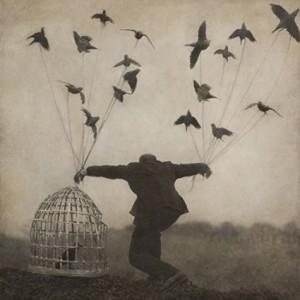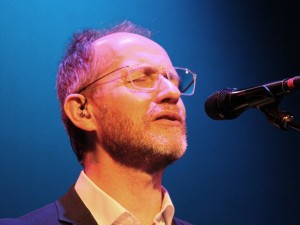The Gloaming Experiments with Traditional Celtic Music in the Echoes Podcast.
Podcast: Play in new window | Download
Subscribe: RSS
Listen to the interview with The Gloaming above, or download it from iTunes.
 The first Irish renaissance happened in the 1970s when Irish bands like Planxty, Dedanan and brought virtuosity and more expansive arrangements to Irish traditional music. Then came the popular wave in the 1990s with Enya, riverdance and Nightnoise, updating Celtic sounds and fusing them with more contemporary sounds and production.
The first Irish renaissance happened in the 1970s when Irish bands like Planxty, Dedanan and brought virtuosity and more expansive arrangements to Irish traditional music. Then came the popular wave in the 1990s with Enya, riverdance and Nightnoise, updating Celtic sounds and fusing them with more contemporary sounds and production.
Nothing much has happened since then, but The Gloaming could be the first wave of a new Celtic sound, one that’s part chamber music, part experimental and yet, still very traditional. The Gloaming is also something of a supergroup that includes Iarla Ó Lionaird from Afro Celt Sound System, virtuoso fiddler Martin Hayes and Thomas Bartlett, also known as Doveman. I peeked into the twilight sound of The Gloaming.
If anyone knows something about stepping outside of tradition, it’s Iarla Ó Lionaird. The award winning Irish sean nós singer spent about a decade with the world fusion group, Afro Celt Sound System.
He’s been singing sean nós since he was a child. It’s a traditional, Gaelic style of acapella singing, noted for its deep emotion and fluid, sometimes pyrotechnic melodic lines. Iarla was a child prodigy, appearing on TV and radio when he was seven.
Born two years ahead of Iarla in 1962, violinist Martin Hayes, first heard of the singer when Iarla was about 11 or 12.
“I do recall that both my father and myself had this kind of fan relationship to this young kid from County Clare, who was singing with a kind of an outstanding level of maturity and expression at an incredibly young age,” remembers Martin.
“I’ve actually been aware of Martin’s music too since I was a kid, because we used to do these competitions and meet at least once, maybe several times a year as the competitions were regional and then they became national,” reminisces Iarla, adding “In all modesty, we can say we were always winning and we were always getting to the national level, he with the fiddle and me with the voice.”
 Iarla’s receding hair is trimmed tight to the scalp these days and he’s wearing loose a fitting suit. Martin is still holding on to his confetti burst of curly brown hair and wearing round wire-rimmed glasses. This is two-fifths of The Gloaming, which also includes fellow Irishman Caoimhín ó Raghallaigh [qwee-veen o’rile-lah] on hardanger fiddle, and two Americans, guitarist Dennis Cahill and pianist Thomas Bartlett who also record as Doveman. The Gloaming’s sound has evolved over the years, but it always comes from five musicians playing together. That’s how a song called “Opening Set” began.
Iarla’s receding hair is trimmed tight to the scalp these days and he’s wearing loose a fitting suit. Martin is still holding on to his confetti burst of curly brown hair and wearing round wire-rimmed glasses. This is two-fifths of The Gloaming, which also includes fellow Irishman Caoimhín ó Raghallaigh [qwee-veen o’rile-lah] on hardanger fiddle, and two Americans, guitarist Dennis Cahill and pianist Thomas Bartlett who also record as Doveman. The Gloaming’s sound has evolved over the years, but it always comes from five musicians playing together. That’s how a song called “Opening Set” began.
“As to what it would sound like and how it would shape up, that was matter of kind of group experimentation,” Martin divulges. “We simply sat in a circle and began just tossing ideas in, and I suppose a form, a sound, a process began to evolve and that’s the sound of the band.”
“So is that how the opening set came about, sitting around in a circle?” I interject.
“Literally that’s what it was,” laughs Martin. “Some of the opening set was drawn from a repertoire that Dennis and I had already explored, so I had a little bit of fear that some of those things could at least work. But it grew into something larger than that, and that was the first piece of music we performed on stage.”
The Gloaming is a group of virtuosos, but much of their music is slow and spacious.
“It’s not unusual that the songs of our tradition should be that way, but then again, since I started recording, I was regarded as one of the slowest, but I liked the beauty that I feel is inherent in the melodies,” reveals Martin. “I just don’t want to play them so fast that that the natural beauty gets condensed.”
Iarla has a different explanation, one more related to minimalism.
“It’s almost like a trance, there’s a lot of repetition of course,” Iarla adds. “That’s the structure of most Irish music. These are these tiny little variations as they cycle around. It’s actually kind of a form of minimalism and it’s best expressed slowly because if you play it too fast, the detail is lost. And the detail is where the emotion lives.”
Even when The Gloaming play a traditional song, it’s not necessarily done traditionally.
“We’re doing a song like O’Sheen, and that’s based on a traditional tune. But we never actually really play the tune,” affirms Martin. “On the other hand, Iarla is singing a version of that, but it’s really like a melodic variant of that and it’s using that tune as a springboard into another line of melody.”
Many of their lyrics have never actually been set to music. Iarla carries books of ancient poems with him.
“There’s a lot of ancient texts in the Irish literary carpet, for which there was no parallel music known, so we’ve been drawing on that and on modern poetic sources as well, and in those situations we do write the melodies from the ground up usually, or as Martin has suggested, we create sort of hybrid music texts,” Iarla confesses.
There are a few interesting, non-traditional timbres in The Gloaming. Caoimhin ó Raghallaigh plays the Norwegian hardanger fiddle which has sympathetic drone strings, roughly similar to an Indian sitar.
“[The hardanger] generates some interestingly old-like tonalities, and it gives Caoimhin an opportunity to explore the textural tonal elements of the tradition,” Martin contends.
Pianist Thomas Bartlett is distinctly non-Irish and non-traditional. In performance he comes across as a debauched drunk wearing something between a raggedy bathrobe and a smoking jacket and pajama bottoms with. A glass and bottle of wine at his feet. He leans into his piano, playing as if rapturously swept up by the music. And he isn’t always playing the keys.
“Thomas has a kind of a signature sound there of making muted tones by placing his hand on the strings kind of strategically inside but they also generate a very eerie, evocative quality as well, which was I think very appropriate in the Song 44,” discloses Martin.
The Gloaming could be in the vanguard of a new Celtic sound. The first since the Celtic renaissance of the 1990s and the peak of Enya and riverdance.
“We’ve already found out from our work in front of people, these people absolutely adored us,” Iarla declares. “They want it. They want to experience the music deeply and for longer periods of time. They want to chase the curve of where we’re going and they can do that better if we give them more time to do it. Also, of course, it allows us to go to more and different range and palette of expression and feeling – allowing it to actually breathe out.”
The Gloaming have recently released their second album, inventively titled, The Gloaming 2.
